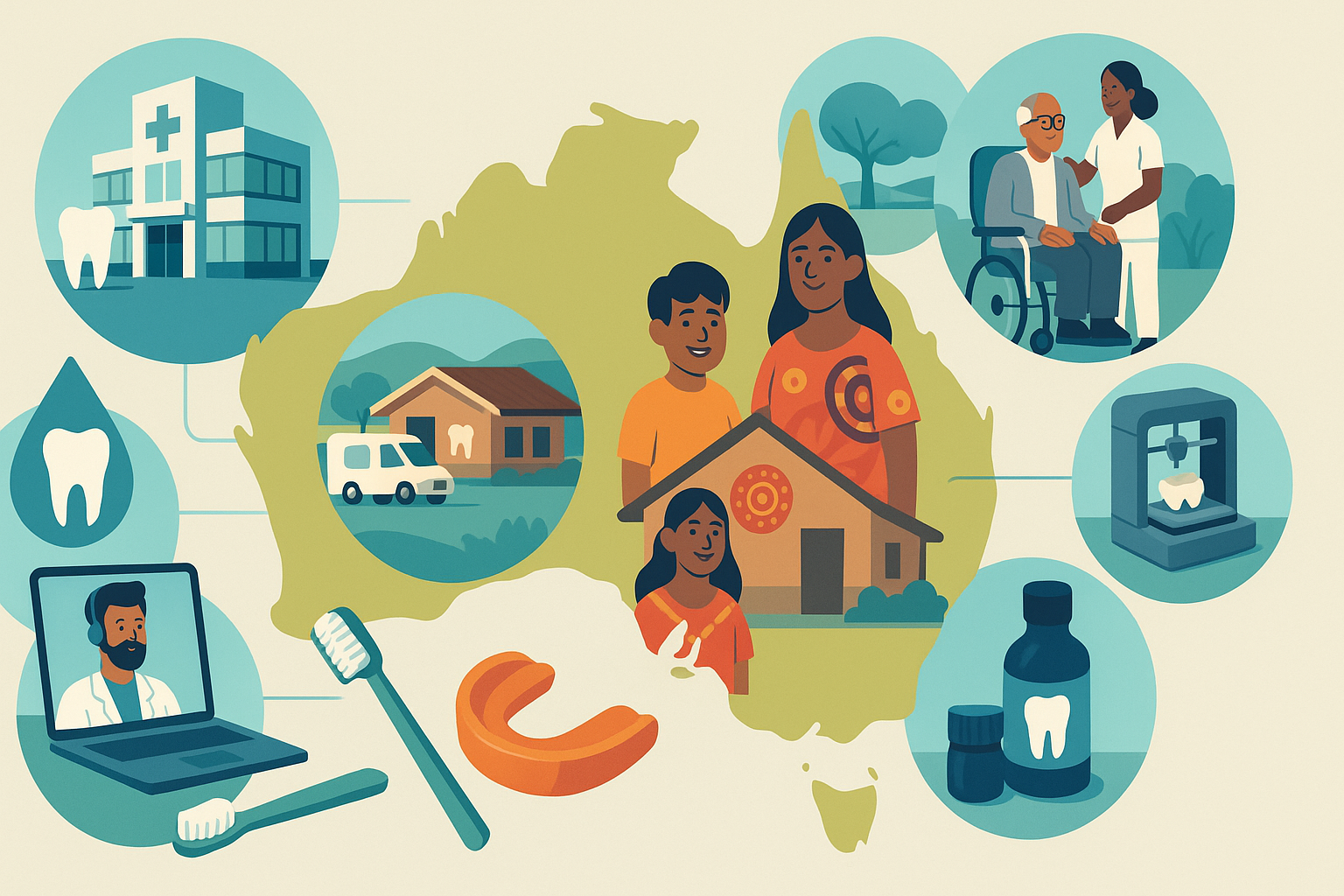Dental care in Australia operates on a mixed model. Children from eligible families benefit from the CDBS, a federal program that subsidises routine services at both public and private clinics. Adults, unless they are concession‑card holders or belong to priority groups, typically access care privately. State and territory public clinics focus on urgent and basic treatments for those who qualify, while complex elective work often remains in the private sector.
Affordability remains the sticking point. Routine check‑ups are cost‑effective in the long run, yet many Australians postpone them until pain appears. This delay escalates the need for root canals, extractions, and prosthetics. Public wait times can be lengthy, especially in metropolitan clinics with high demand, and rural areas struggle with workforce shortages that compound travel costs and time off work.
Preventive health policy has made strides. Widespread water fluoridation correlates with reduced decay across communities. Schools and maternal‑child health services reinforce habits—twice‑daily brushing, supervised brushing for young children, and the careful use of fluoride. Diet remains pivotal: sugar‑sweetened beverages and frequent snacking are key risk factors, and oral health messaging is increasingly aligned with broader nutrition and obesity strategies.
Equity is central. Aboriginal and Torres Strait Islander peoples experience higher levels of tooth decay and periodontal disease. Solutions include culturally secure care environments, training Indigenous oral health workers, and co‑designing services with local communities. For migrants and refugees, language services, health literacy resources, and trauma‑informed approaches increase uptake and continuity.
Technology offers new pathways. Remote screening through telehealth can triage emergencies, offer post‑operative checks, and provide motivational interviewing for behaviour change. Chairside CAD/CAM, digital impressions, and 3D printing shorten treatment timelines, while atraumatic restorative techniques broaden what can be done in non‑hospital settings. Silver diamine fluoride and preventive resin restorations are being embraced for early lesion control.
For consumers navigating private insurance, the details matter: annual limits, service‑specific caps, preferred provider networks, and waiting periods can dramatically change out‑of‑pocket costs. Shopping around—both for policies and providers—pays off. For those using public services, understanding eligibility criteria and maintaining up‑to‑date contact information can prevent missed offers of appointments when wait‑listed.
Ultimately, Australia’s challenge is to knit together prevention, targeted subsidies, and innovative delivery so no group is left behind. Strengthening the safety net while supporting private capacity can improve timeliness, reduce catastrophic expenses, and keep the focus on healthy mouths rather than emergency fixes.



